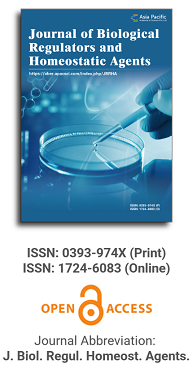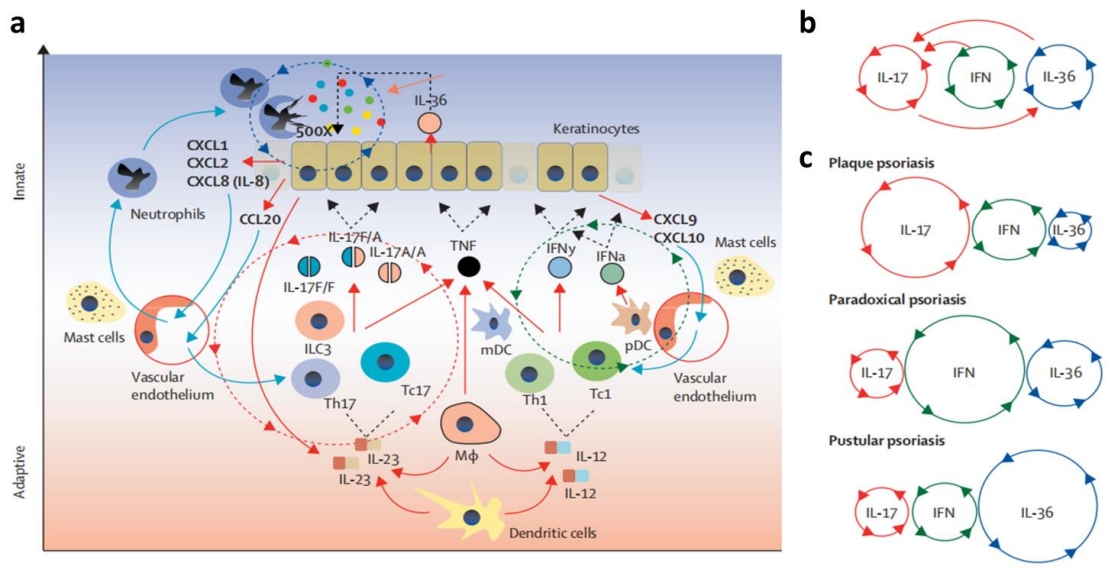
Publication Frequency
Quarterly since 2025
Journal Articles
Search
Search scope
Journal Center
Asia Pacific Academy of Science Pte. Ltd. (APACSCI) specializes in international journal publishing. APACSCI adopts the open access publishing model and provides an important communication bridge for academic groups whose interest fields include engineering, technology, medicine, computer, mathematics, agriculture and forestry, and environment.
Volume Arrangement
2025
Featured Articles

Psoriasis is a common, chronic, and inflammatory skin disease. Macrophages account for about 61.3% of the inflammatory cells infiltrating psoriatic lesions. Modulating macrophage polarization, inhibiting their infiltration, and targeting the secretion of inflammatory factors and associated inflammatory pathways by these cells can alleviate psoriasis symptoms and inflammation. Moreover, nanomaterials as novel drug carriers, offer unique advantages such as large surface area, easy modification, high biocompatibility, good biodegradability, enhanced systemic adsorption, etc. Nanomaterials have great potential for efficient drug delivery and release, as well as improving therapeutic efficacy while reducing adverse effects. By systematically addressing the role of macrophages in psoriasis pathogenesis and the potential of nanomaterials in treating psoriasis through modulating macrophages, this review enhances our understanding of the disease mechanism and holds promise for novel therapeutic breakthroughs and advancements in the future treatment of psoriasis.
Pathogenic Detection of Alveolar Lavage Fluid inChildren with Lobar Pneumonia
Article ID: 3507
Vol 39, Issue 1, 2025
DOI: https://doi.org/10.23812/j.biol.regul.homeost.agents.20253901.8
Vol 39, Issue 1, 2025
Received: 22 November 2022; Accepted: 20 April 2023; Available online: 16 January 2025; Issue release: 31 January 2025
Download PDF
Abstract
Background: Lobar pneumonia seriously endangers children’s respiratory tract health and affects their growth and development,
so it is very important to identify pathogenic microorganisms and use appropriate antibiotics early.
Objective: To analyze the significance of pathogenic detection of alveolar lavage fluid in children with lobar pneumonia.
Methods: The clinical data of 80 children with lobar pneumonia who were hospitalized from March 2019 to March 2022 were
analyzed for pathogenic characteristics in bronchoalveolar lavage fluid (BALF) detected by fluorescence quantitative PCR (FQPCR), and serum mycoplasma pneumoniae-specific antibody (MP-IgM) levels were measured by enzyme-linked immunosorbent
assay (ELISA). The differences in clinical lung infections in children with different age groups, mycoplasma pneumoniae (MP)
pneumonia versus non-MP pneumonia, and mixed versus single infections were compared.
Results: There were 15 cases of pathogenic MP infection in the 1–3 years old group, 34 cases of MP infection in the 4–6 years
old group, and 6 cases of pathogenic MP infection in the 7–14 years old group. Statistically significant differences were observed
in the detection rate of MP between each age group (p < 0.001), and the highest MP detection rate was found in the 7–14 years
old group. The differences in the detection rates of single and mixed infections between the age groups did not come up to the
statistical standard (p > 0.05). The mean age of patients with a single infection was slightly older than that of patients with mixed
infection, but no statistical difference was found between the groups (p > 0.05). The duration of disease was shorter than that of
patients with mixed infection, but the difference between the two groups was not statistically significant (p > 0.05). The positive
rate of MP detection in BALF by FQ-PCR (55, 73.75%) was higher than that of serum MP-IgM detection (38, 47.5%).
Conclusion: The detection rate of MP was the highest in children with lobar pneumonia, followed by Streptococcus pneumoniae
(SP) and adenovirus (ADV), and the pathogens of infection varied in different age groups. MP is the main pathogen of most
mixed infections, and mixed infections are more prone to severe or refractory cases. Further studies are required prior to clinical
promotion.
Keywords
children; lobar pneumonia; alveolar lavage fluid; pathogenic detection; significance analysis; clinical analysis
References
Supporting Agencies
Copyright (c) 2025 Zhiping Li,Yuxia Liu

This site is licensed under a Creative Commons Attribution 4.0 International License (CC BY 4.0).
Editor-in-Chief

Medical Genetics, University of Torino Medical School, Italy
Co-Editor-in-Chief

Department of Biomedical, Surgical and Dental Sciences, University of Milan, Italy
Indexing & Archiving
News & Announcements
2025-02-01
In addition to the first issue that has already been published by the original publisher, there will be four more issues released this year, with scheduled publication dates in March, June, September, and December respectively.
2025-01-21
Starting from Volume 39 Issue 2 (2025), the ownership of Journal of Biological Regulators and Homeostatic Agents (ISSN: 0393-974X (P); 1724-6083 (O)) will be transferred from Biolife Sas to Asia Pacific Academy of Science Pte. Ltd. As of 21 January 2025, authors should make submissions to the new journal system and follow the author guidelines. Asia Pacific Academy of Science Pte. Ltd. will take over the publication of manuscripts being processed.

